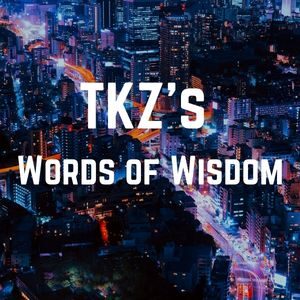Villainous Takes
Today’s Words of Wisdom goes back in August, 2008, when the Kill Zone had just begun. That month KZB devoted an entire week to villains, an evergreen topic, one worthy of being showcased. Perhaps not every novel needs a villain, but many do need a bad man or woman to make things difficult for the hero. It was a challenge to select only three posts to highlight from that week.
In the end, I went with the terror of the unremarkable, genuine motivations for villainy, and advice on how to help your villains be “pretty damn interesting.” I hope you will comment with your own thoughts on these villainous takes.
As always, the full articles are linked from the date for each. All three are well worth your time. Also, I want to thank JSB for creating the striking Words of Wisdom graphic below.

John Mortimer, creator of Rumpole, wrote that “most of the interest and part of the terror of great crime are not due to what is abnormal, but to what is normal in it; what we have in common with the criminal rather than the subtle insanity which differentiates him from us.” I couldn’t agree more – for me, it is the commonality rather than the abnormality that makes a villain truly villainous.
Take Doctor Crippen – an unremarkable man in real life, the least likely man perhaps to have poisoned and dismembered his wife or to have been pursued across the Atlantic with a young mistress in tow disguised as a boy. Part of the fascination with this case is the sheer ordinariness of the supposed murderer – and now, with DNA evidence casting doubt on whether the woman whose body was found was that of Doctor Crippen’s wife, Cora, the mystery of what actually happened may never be solved.
In fiction of course, some of the most fantastical crimes that occur in real life can never be used simply because readers would never believe them. Take for example the man who murdered his wife over an affair that happened 40 years before and then left her body as a gift beneath the Christmas tree. Writers have to walk a fine line with villains too, making them both believable as well as intriguing. Are they merely the flip side of the protagonist? Are they an ordinary person pushed to the brink? Or does some deep psychological wound create the monster within?
Clare Langley-Hawthorne—August 8, 2008
In my latest book, Boneyard, I had a particularly hard time. One of my villains came to life easily. I added some traits to him in successive drafts, but felt like I nailed him down without too much trouble.
And then there was the other guy. Man, he was a problem (serves me right for having two bad guys, I suppose). I had done voluminous research on serial killers in an attempt to make him as believable as possible, but kept encountering the same pitfalls. I felt at times like I was making villain soup, adding a pinch of Bundy and a dash of Dahmer, but he still seemed bland. Up until the final draft I cast him as a religious fanatic, quoting scripture to explain his motivation. But every time I read over his dialogue I found myself squirming. It felt very forced and contrived, never a good thing.
Someone once said, “the villain is the hero of his own story.” It’s an important thing to remember. We’ve all known people who have been able to justify terrible acts to themselves. They did it for the greater good, or they didn’t have a choice. To me, those are believable villains.
So I slashed away with my red pen, leaving far more of his motivations to the reader’s imagination. In the end, I was happy with him. But with every book the problem must be freshly confronted. I’m wrestling with a different guy now, a real slimeball who’s motivated both by greed and hatred. Yet at the moment he’s more whiny than scary, not a good thing. And he keeps pulling at his handlebar moustache and asking about the rent, which is just annoying. Ah well. Hopefully I’ll get him by the line edits…
Michelle Gagnon—August 21, 2008
A lot of first-time novelists — and many bad Hollywood films — make the mistake of painting villains in two dimensions, with no redeeming or aspirational qualities. But if you think about your favorite bad guys, many of whom have already been mentioned in this killer blog by other authors, the villains are pretty damn interesting.
Often it’s their power. Darth Vader might be evil, but he sounds like James Earl Jones and can choke a guy from across the room, just by bringing his fingers together. Who doesn’t want that power the next time their boss (or spouse) berates them?
Sometimes it’s their charm. Think of Alan Rickman in the first Die Hard movie. Smart, funny, even likable — but still a convincing villain willing to kill scores of people just to steal some money. Now try to remember the bad guy in the second Die Hard movie, then give up immediately because it sucked. The series didn’t get back on track until they brought some personality back to the villains.
Bigger and better
It’s not only OK, it’s essential that the villain be better than your protagonist in some way — smarter, stronger, perhaps more money or charm. Or perhaps just more determined.
Lex Luthor is a lot smarter than Superman. The Joker less conflicted than Batman. Hannibal Lecter is less prone to acid reflux than Special Agent Starling.
But it’s the contrast that’s important, the juxtaposition of qualities you loathe with characteristics you wish you had. A great villain makes you hate them at a visceral level because, deep down, part of you envies them as well.
Don’t fall in love
Your antagonist is not your protagonist. Say this again like a mantra before you write another chapter.
Caveat — this isn’t about all the superb novels and films in which a flawed character follows an arc of redemption — recognizing that most great stories since The Odyssey have been about that inner quest. This is about writers who fall in love with their villains to the point that they sacrifice some of the moral repugnance needed as an essential ingredient for a memorable bad guy.
(Easy example is Hannibal Lecter in any of the titles written after Red Dragon and Silence Of The Lambs. If those books had been written first, he wouldn’t be the icon of evil he is today.)
I want to be intrigued by your villain, but I also want to feel some self-loathing or fear at my own attraction to him.
Tim Maleeny—August 24, 2008
***
Now it’s your chance to weigh in on villains: the cool, the bad, the evil. Below are three questions as prompts for discussion.
- Does an unremarkable or “normal” seeming villain interest you as a writer?
- How do you get a handle on your villain’s motivations?
- What makes a villain “pretty damn interesting” to you?

